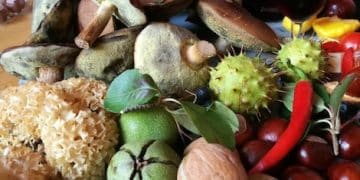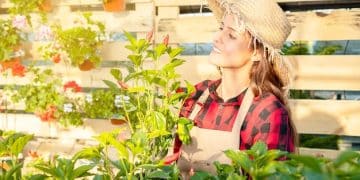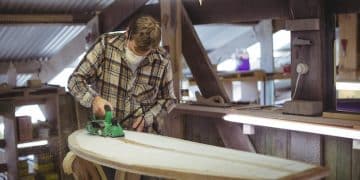DIY Garden Composting: Turn Waste into Savings & Cut Fertilizer Costs by 40%

Composting your garden waste at home is a highly effective, eco-friendly strategy that substantially reduces household waste and can cut your fertilizer expenses by up to 40%, cultivating healthier soil and plants naturally.
Are you looking for a practical, environmentally conscious way to save money and boost your garden’s health? The answer might be closer than you think, right in your own backyard. Embracing DIY Garden Composting: Turn Waste into Savings and Reduce Fertilizer Costs by 40% offers a powerful solution, transforming kitchen scraps and yard trimmings into rich, nutrient-dense soil amendment. This guide explores how this simple process not only benefits your plants but also significantly lightens your wallet by slashing the need for commercial fertilizers.
The Fundamentals of Composting: Turning Waste into Black Gold
Composting, at its core, is nature’s recycling process. It’s the controlled decomposition of organic matter into a nutrient-rich soil amendment called compost. This “black gold” improves soil structure, aeration, and water retention, while releasing essential nutrients gradually, fostering robust plant growth. Understanding the basics is your first step towards a thriving, self-sufficient garden.
Understanding the ‘Ingredients’ for Optimal Compost
Successful composting relies on balancing two main types of materials: ‘greens’ (nitrogen-rich) and ‘browns’ (carbon-rich). Getting this ratio right is crucial for decomposition. Too many greens can lead to a smelly, slimy pile, while too many browns will slow the process significantly. Aim for a ratio of roughly 25-30 parts carbon to 1 part nitrogen.
- Green Materials: These include fresh grass clippings, fruit and vegetable scraps, coffee grounds, tea bags, and plant trimmings. They provide nitrogen, which fuels the microorganisms responsible for decomposition.
- Brown Materials: Think dried leaves, straw, wood chips, shredded newspaper, cardboard, and sawdust. These materials supply carbon, which provides energy for the decomposers and helps create the bulk of the compost.
Choosing Your Composting Method
There are several popular methods for home composting, each with its own advantages and ideal contexts. Your choice will depend on the space available, the amount of waste you generate, and your desired composting speed. Consider what best fits your lifestyle and gardening goals.
For small spaces or those new to composting, a simple backyard pile or a ready-made compost bin can be an excellent starting point. These methods are relatively low-maintenance, requiring occasional turning and the right balance of materials. More advanced gardeners might explore worm composting (vermicomposting) for highly concentrated, nutrient-rich “worm castings,” or even trench composting, which involves burying organic waste directly in garden beds.
The goal is to create an environment where beneficial microorganisms, fungi, and worms can thrive. These tiny helpers are the true architects of your compost pile, tirelessly breaking down organic matter into its most usable forms. Providing them with the right balance of food (greens and browns), air, and moisture ensures they work efficiently, transforming your waste into a valuable garden resource.
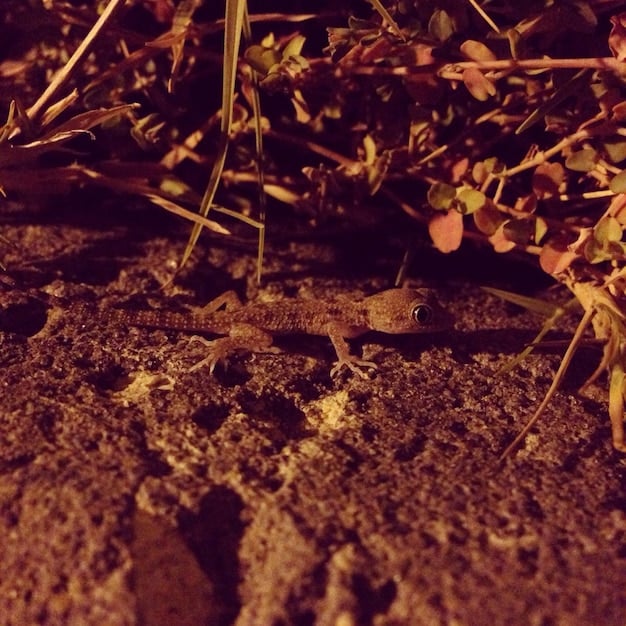
Setting Up Your Composting System: Practical Steps for Success
Once you understand the ‘what’ and ‘why’ of composting, the ‘how’ comes into play. Setting up an efficient composting system doesn’t have to be complicated or expensive. A well-planned setup ensures a steady supply of compost and keeps the process clean and manageable, making it a sustainable practice for any home. From choosing the right location to assembling, each step contributes to your composting journey.
Selecting the Ideal Location and Bin Type
The success of your composting endeavor hinges significantly on where you place your compost bin and the type you choose. An ideal location is easily accessible, somewhat shaded to prevent drying out, and away from sensitive areas like open windows or property lines, though a well-managed compost pile should not smell offensive. Consider aesthetic appeal as well, if the bin will be visible.
- Location Considerations:
- Accessibility: Easy to add materials and turn the pile.
- Drainage: On bare soil to allow drainage and access for beneficial organisms.
- Shade: Helps retain moisture and prevents the pile from overheating or drying out too quickly.
- Proximity to Water Source: Convenient for moistening the pile if it gets too dry.
- Bin Types:
- Open Piles: Simple and inexpensive, suitable for large volumes of waste. Requires more space.
- Enclosed Bins: Available in plastic or wood, they contain the pile, look tidier, and may deter pests. Tumbler-style bins offer easy turning.
- Worm Bins (Vermicompost): Excellent for kitchen scraps in smaller spaces, including indoors. Produces nutrient-rich worm castings.
Layering and Maintaining Your Compost Pile
Building your compost pile correctly is key to ensuring efficient decomposition. Think of it like building a lasagna: layers are essential. Start with a base of coarser brown materials for good airflow, then alternate layers of greens and browns, aiming for the recommended carbon-to-nitrogen ratio. This layering helps to maintain aeration and prevents the pile from becoming too compact or too wet.
Moisture content is another critical factor; the pile should feel like a wrung-out sponge—damp but not soggy. If it’s too dry, decomposition slows down; if too wet, it can become anaerobic and smelly. Regular turning is also vital. Turning introduces oxygen, which is essential for the aerobic bacteria that do most of the decomposing. Mixing the materials also distributes moisture and microbes, speeding up the composting process. Consistent attention to these details will yield high-quality compost.
Integrating these practical steps into your routine makes composting a straightforward and rewarding part of your gardening efforts. The effort invested in setting up and maintaining your system properly pays dividends in the form of rich, free soil amendment and significant savings on store-bought fertilizers.
What to Compost (and What Not To): A Smart Gardener’s Guide
Knowing what goes into your compost pile is as important as understanding how to build it. The right materials decompose effectively and contribute to a healthy, nutrient-rich final product, while the wrong ones can attract pests, create unpleasant odors, or harm your garden. This section clarifies what’s safe and beneficial to compost, and what should always be kept out.
The “Yes” List: Ideal Composting Materials
A diverse mix of organic materials ensures your compost pile receives a balanced supply of nutrients for the microorganisms. Generally, if it was once alive and hasn’t been treated with harmful chemicals, it’s probably good for your compost. Prioritizing these materials will lead to richer compost and divert significant amounts of waste from landfills, effectively turning waste into a resource.
- Kitchen Scraps: Fruit and vegetable peels, cores, scraps, coffee grounds, tea bags (staples removed), eggshells (crushed).
- Yard Waste: Grass clippings, leaves, small twigs, straw, hay, non-diseased plant trimmings, wood chips, sawdust from untreated wood.
- Paper Products: Shredded newspaper (non-glossy), cardboard (torn into small pieces, remove tape and labels), paper towels (untreated and non-greasy).
- Other: Hair, dryer lint, cotton and wool rags (natural fibers only, in small pieces).
The “No” List: Materials to Avoid in Your Compost
Certain items can disrupt the composting process, introduce pathogens, attract unwanted critters, or leave harmful residues in your soil. Avoiding these ensures your compost remains healthy and safe for your garden. This is a critical aspect of clean, effective composting, safeguarding both your garden’s health and your local environment.
- Meat and Dairy Products: (e.g., meat scraps, bones, dairy products, fats, oils, greases). These decompose slowly, produce odors, and attract pests like rodents and flies.
- Diseased Plants: Pathogens can survive the composting process and spread disease to healthy plants when the compost is used.
- Pet Waste: (e.g., dog or cat feces). Contains harmful bacteria, viruses, and parasites that can contaminate your compost.
- Weeds with Seeds: Many weed seeds can survive composting and sprout in your garden when compost is applied. Hot composting piles might kill some, but it’s often safer to avoid.
- Chemically Treated Materials: (e.g., wood treated with preservatives, plants sprayed with pesticides). These can introduce toxins into your compost and subsequently into your garden soil.
By adhering to these guidelines, you’ll ensure your compost is a clean, beneficial amendment for your garden, supporting robust plant growth without introducing unwanted problems. This thoughtful approach transforms your waste into a valuable asset, truly embodying the principles of sustainable gardening.
The Science of Decomposition: How Your Compost Transforms
Beyond simply adding materials to a pile, understanding the intricate biological processes at play in a composting system reveals the true marvel of decomposition. This isn’t just waste breaking down; it’s a dynamic ecosystem where billions of microorganisms, aided by a host of larger creatures, work tirelessly to transform organic matter into a stable, nutrient-rich soil conditioner. Unlocking these secrets empowers you to optimize your composting efforts.
The Role of Microorganisms: The Unsung Heroes
The real work of composting is done by microorganisms—bacteria, fungi, and actinomycetes. These microscopic decomposers thrive on organic matter, breaking it down into simpler compounds. They require specific conditions to flourish, primarily a balance of carbon (energy source) and nitrogen (building blocks), adequate moisture, and oxygen. When these conditions are met, the pile heats up, indicating rapid microbial activity.
Different groups of microorganisms dominate at various stages of decomposition. Initially, mesophilic bacteria (moderate-temperature lovers) begin the process. As the pile heats up, thermophilic bacteria (heat-lovers) take over, efficiently breaking down tough organic compounds. This ‘hot phase’ is crucial for killing off pathogens and weed seeds. As the pile cools, fungi and other slower-acting decomposers complete the process, transforming the material into mature compost.
Aeration, Moisture, and Temperature: The Trifecta for Success
Maintaining optimal conditions is paramount for encouraging these microscopic workers. Think of your compost pile as a living system with specific needs:
- Aeration: Oxygen is vital for aerobic decomposition. Without enough air, anaerobic bacteria take over, leading to slow decomposition and foul odors. Turning the pile regularly introduces oxygen, preventing compaction and ensuring consistent activity.
- Moisture: Microorganisms need water to survive and thrive, but too much can displace oxygen, leading to anaerobic conditions. The ideal moisture level is like a wrung-out sponge—damp but not dripping wet.
- Temperature: A healthy compost pile heats up, often reaching temperatures between 130°F to 160°F (55°C to 70°C). This heat is a byproduct of microbial activity and helps break down materials faster, while also killing off weed seeds and harmful pathogens. Turning helps distribute heat evenly through the pile.
Understanding these biological and environmental factors allows you to troubleshoot issues and fine-tune your composting method. By regularly monitoring and adjusting aeration, moisture, and temperature, you actively support the decomposition process, ensuring a faster yield of high-quality compost. This scientific approach elevates composting from a simple task to a well-managed biological endeavor, guaranteeing superior results for your garden.
Harvesting and Using Your Compost: Maximizing Garden Benefits
After patiently nurturing your compost pile, the time eventually comes to reap the rewards. Knowing when and how to harvest your finished compost, and effectively integrating it into your garden, is crucial for maximizing its benefits. This isn’t just about adding nutrients; it’s about fundamentally improving your soil and creating a more resilient ecosystem.
Recognizing Finished Compost: The Signs of Black Gold
Mature compost is dramatically different from the raw materials you started with. It should be dark brown or black, crumbly, and have an earthy, pleasant smell—like forest floor soil. You shouldn’t be able to identify the original materials (like food scraps or leaves), though some larger twigs or wood chips might remain, indicating they need more time or are simply slow to break down. The temperature of the pile should be cool and stable, indicating that intense microbial activity has subsided.
If your compost still looks like identifiable food scraps, smells sour, or generates heat when turned, it’s not ready. Give it more time, adjust your greens-to-browns ratio, or turn it more frequently. Patience is often rewarded with a superior product. Once ready, you can sift it to remove any larger, undecomposed pieces, which can then be returned to a new compost batch to continue breaking down. This ensures your finished compost is a fine, uniform consistency, ideal for application.
Applying Compost for Optimal Garden Health and Savings
Using compost is where the magic truly happens, transforming your garden and reducing your reliance on expensive chemical fertilizers. Its versatility means it can be incorporated in various ways, each offering distinct advantages. The significant benefit lies not just in its nutrient content but in its ability to enhance overall soil health, leading to stronger, healthier plants naturally.
- Soil Amendment: Mix 2-4 inches of compost into the top 6-8 inches of garden soil before planting. This improves soil structure, water retention in sandy soils, and drainage in clay soils.
- Top Dressing: Spread a thin layer (½ to 1 inch) of compost around existing plants, trees, and shrubs. This slowly releases nutrients, suppresses weeds, and retains moisture.
- Potting Mix Component: Blend compost with other ingredients like perlite, vermiculite, and peat moss (or coir) to create a custom, nutrient-rich potting mix for containers and seed starting.
- Compost Tea: Steep finished compost in water for several days to create a liquid fertilizer. This “compost tea” can be used to water plants, providing a gentle nutrient boost and beneficial microbes.
The consistent use of compost enriches your soil, making it more vibrant and productive. This translates directly into savings: as your soil thrives with natural fertility, your dependence on costly synthetic fertilizers diminishes, potentially reducing your spending by up to 40% or more. It’s a sustainable cycle that nurtures both your garden and your budget, proving that some of the best gardening solutions are also the most natural.
Beyond Savings: The Environmental Impact of Composting
While the financial benefits of DIY Garden Composting: Turn Waste into Savings and Reduce Fertilizer Costs by 40% are undeniably attractive, the environmental advantages extend far beyond your wallet. Composting is a powerful tool in the fight against climate change, waste, and soil degradation. It’s an act of environmental stewardship that every gardener can embrace, contributing to a healthier planet from their own backyard.
Diverting Waste from Landfills: A Major Win
One of the most significant environmental impacts of composting is waste diversion. Organic waste, when sent to landfills, decomposes anaerobically (without oxygen). This process produces methane, a potent greenhouse gas that is more than 28 times more effective at trapping heat in the atmosphere than carbon dioxide over a 100-year period. By composting your food scraps and yard waste, you directly prevent methane emissions.
According to the U.S. Environmental Protection Agency (EPA), food waste is the largest component of municipal solid waste sent to landfills. By diverting this organic material from landfills and transforming it into a valuable resource, you’re playing a direct role in reducing greenhouse gas emissions and extending the lifespan of landfills. This simple act reduces your household’s carbon footprint and contributes to a circular economy where waste is minimized and resources are reused efficiently.
Enhancing Soil Health and Biodiversity
Compost is not just a fertilizer; it’s a soil builder. Its application dramatically improves soil health in numerous ways, leading to more resilient and productive ecosystems. Healthy soil, in turn, supports greater plant vitality, requiring fewer external inputs and fostering natural defenses against pests and diseases. This natural approach enhances the overall biodiversity both above and below the soil surface.
- Improved Soil Structure: Compost acts as a binder, creating stable aggregates that improve aeration and drainage in heavy clay soils, and increase water retention in sandy soils. This leads to healthier root development.
- Increased Microbial Activity: Compost introduces a rich diversity of beneficial microorganisms into the soil, which helps in nutrient cycling, disease suppression, and overall soil vitality. These microbes are essential for converting nutrients into forms plants can readily absorb.
- Reduced Chemical Runoff: By using compost as a natural fertilizer, you reduce or eliminate the need for synthetic fertilizers, which often contain chemicals that can leach into groundwater or run off into waterways, contributing to pollution and algal blooms.
- Carbon Sequestration: Healthy soils amended with compost have a greater capacity to sequester carbon from the atmosphere, effectively storing it within the soil. This process, known as carbon farming, positions compost as a key player in mitigating climate change.
These environmental benefits underscore that composting is much more than a gardening hack; it’s a commitment to ecological balance. Each compost pile contributes to a healthier planet, demonstrating how small, consistent actions in our backyards can have a significant collective impact on global environmental challenges, making both our gardens and our world more sustainable.
Troubleshooting Common Composting Challenges
Even with the best intentions, composting can sometimes present challenges. Odors, uninvited guests, or a stubbornly slow pile can be discouraging. However, most composting issues are easily resolved with a little understanding and adjustment. Learning to troubleshoot these common problems will keep your composting journey smooth and successful, ensuring you continue to produce high-quality soil amendment.
Dealing with odors and pests: Common issues and fixes
Unpleasant smells usually indicate an imbalance in your compost pile. A strong, rotten odor often points to too much nitrogen (greens) and not enough carbon (browns), or insufficient aeration. Similarly, the presence of pests like flies or rodents is usually a sign of attractive but inappropriate materials being added.
- Sour or Ammonia Smell: This means too much nitrogen. Add more brown materials like shredded leaves, newspaper, or straw. Turn the pile to improve aeration.
- Rotten Egg Smell: This indicates anaerobic conditions, likely due to too much moisture and lack of oxygen. Add more bulky brown materials and turn the pile frequently to introduce air.
- Flies and Other Insects: Often attracted to exposed food scraps. Ensure fresh food scraps are buried deep within the pile, especially if you have an open bin. Cover new additions with a layer of brown material.
- Rodents: Typically attracted to meat, dairy, oily foods, or pet waste. Ensure these items are never added to your compost. Use an enclosed, pest-resistant bin, and keep adding suitable materials fully buried.
When Your Compost is Slow: Speeding up Decomposition
A static or slow-to-decompose compost pile is often a sign that one or more of the “trifecta” conditions—moisture, aeration, or the carbon-to-nitrogen ratio—are out of balance. Diagnosing and correcting these issues can quickly reactivate the decomposition process, yielding finished compost more rapidly.
- Pile Isn’t Heating Up: This often means a lack of nitrogen or insufficient mass. Add more green materials (grass clippings, fresh food scraps) and ensure the pile is large enough (at least 3x3x3 feet for effective heat generation).
- Pile is Dry: Decomposition requires moisture. If your pile is too dry, moisten it with water, aiming for the consistency of a wrung-out sponge. You might also add more moisture-rich green materials.
- Pile is Soggy: Excess moisture can suffocate aerobic bacteria. Add bulky brown materials like wood chips or straw to absorb excess water and improve aeration. Turn the pile regularly to dry it out and introduce oxygen.
- Materials Aren’t Breaking Down: Large pieces break down slower. Chop or shred materials into smaller pieces (no larger than 1-2 inches) before adding them to the pile. This increases surface area for microbial activity.
Regular observation and minor adjustments are key to effective composting. By proactively addressing these common issues, you’ll not only maintain a healthy, productive compost pile but also deepen your understanding of this vital natural process. This active engagement transforms composting from a chore into a rewarding practice that benefits both your garden and the environment.
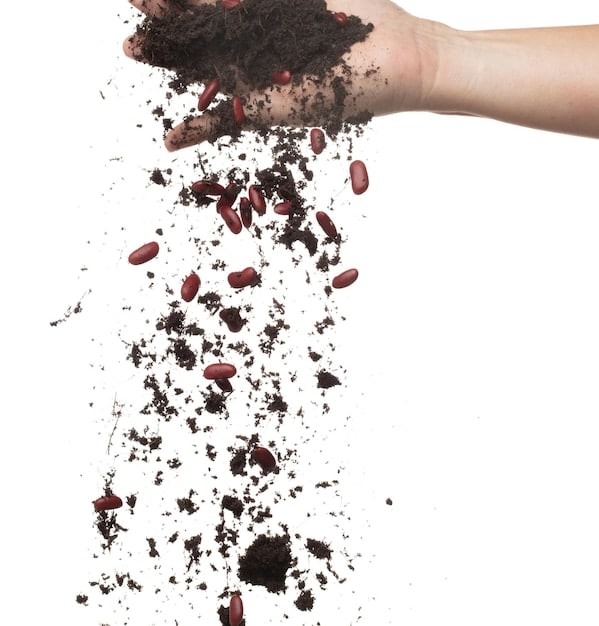
Innovations and Future Trends in Composting
Composting, while rooted in ancient practices, continues to evolve with new technologies and approaches that make it more efficient, accessible, and integrated into modern lifestyles. From advanced home units to community-wide initiatives, these innovations are shaping the future of waste management and sustainable gardening, offering exciting possibilities for the environmentally conscious individual.
Smart Composting and Community Initiatives
The rise of technology is bringing “smart” solutions to the world of composting. These innovations aim to simplify the process, address common challenges, and make composting available to a broader audience, demonstrating a shift towards more integrated and large-scale solutions for organic waste management.
- Smart Composting Bins: Some newer composting units feature sensors to monitor temperature, moisture, and even aeration, providing real-time data to mobile apps. This helps users optimize conditions for faster decomposition and alerts them to imbalances, taking much of the guesswork out of the process.
- Electric Composting Machines: For those without outdoor space or who prefer a quicker method, compact electric composting machines can break down food scraps in a matter of hours or days, producing a dry, inert material that can then be used as a soil amendment or added to a traditional compost pile for further breakdown.
- Community Composting Programs: Beyond individual efforts, many cities and towns are implementing community-level initiatives. These programs often involve drop-off sites for organic waste or curbside collection services, centralizing composting efforts and enabling residents without the space or time for home composting to participate in waste diversion.
- Anaerobic Digestion: While not strictly composting, anaerobic digestion is a related technology gaining traction. It breaks down organic matter in the absence of oxygen, producing biogas (a renewable energy source) and a nutrient-rich digestate that can be used as fertilizer. This process is particularly suitable for large-scale organic waste management.
Composting in Urban Environments and Beyond
As populations become more urbanized, the challenge of managing organic waste in confined spaces becomes more pressing. Innovations in composting are addressing this by offering solutions tailored for urban living, extending the benefits of composting beyond traditional garden settings. These advancements underscore a growing recognition of composting’s role in creating more sustainable and resilient cities.
Micro-composting units designed for balconies, small yards, or even indoor use make it feasible for apartment dwellers to participate. These often include specialized worm farms or compact tumble bins. Furthermore, the concept of “food waste recycling stations” in public spaces or apartment complexes is gaining traction, providing convenient drop-off points that funnel organic waste to larger, centralized composting facilities. These facilities often produce high-quality compost that can then be used in urban gardens, parks, and green spaces, closing the loop on organic waste within city limits.
Looking ahead, integrating composting into broader waste management strategies, coupled with continued innovation in home and community-level solutions, promises a future where organic waste is universally seen not as a problem, but as a valuable resource. These trends highlight the evolving nature of composting, transforming it from a niche gardening practice into a mainstream environmental solution, empowering more individuals and communities to embrace this powerful, sustainable habit.
| Key Point | Brief Description |
|---|---|
| 💰 Savings | Reduces fertilizer costs by up to 40% through homemade nutrient-rich compost. |
| 🌱 Soil Health | Improves soil structure, water retention, and microbial activity for healthier plants. |
| ♻️ Waste Reduction | Diverts kitchen and yard waste from landfills, reducing methane emissions. |
| 🌍 Eco-Impact | Contributes to a sustainable environment by enhancing natural fertility and reducing chemical reliance. |
Frequently Asked Questions About Composting
▼
Avoid adding meat, dairy products, oily foods, pet waste (dogs/cats), diseased plants, and weeds with seeds. These items can attract pests, create unpleasant odors, spread pathogens, or introduce unwanted elements into your garden. Stick to fruit, vegetable scraps, yard trimmings, and untreated paper products for best results.
▼
The time it takes to make compost varies greatly, ranging from a few weeks to several months, depending on the method, materials used, and how well you manage your pile. “Hot” composting (regular turning, balanced greens/browns) can yield compost in 3-4 months, while passive composting might take 6-12 months.
▼
A foul smell typically indicates an imbalance. A rotten odor suggests too much moisture and not enough air; an ammonia smell means too much nitrogen. To fix this, add more “brown” materials (carbon), like dry leaves or shredded cardboard, and turn the pile frequently to introduce oxygen and promote aerobic decomposition.
▼
Yes, absolutely. By creating your own nutrient-rich compost, you significantly reduce or eliminate the need to purchase synthetic fertilizers. Studies and practical experience show that gardeners can reduce their fertilizer expenses by 40% or more, while also improving soil health and plant vitality naturally, leading to long-term savings.
▼
No, a special bin isn’t strictly necessary. You can start with a simple pile in your yard, often called a “backyard pile.” However, dedicated compost bins or tumblers can help contain the materials, maintain heat, deter pests, and make turning easier. The best choice depends on your space, budget, and desired level of involvement.
Conclusion
Embracing DIY garden composting is more than just a gardening trend; it’s a profound step towards a more sustainable and economically savvy lifestyle. By understanding the simple science behind decomposition and implementing basic practices, you can transform everyday waste into a precious resource, significantly cutting down on fertilizer costs and enriching your garden naturally. The journey from kitchen scraps to “black gold” is incredibly rewarding, offering tangible savings and contributing positively to environmental health. This practice empowers you to cultivate not just a thriving garden, but also a deeper connection to sustainable living, proving that some of the most impactful changes begin right in our own backyards.
